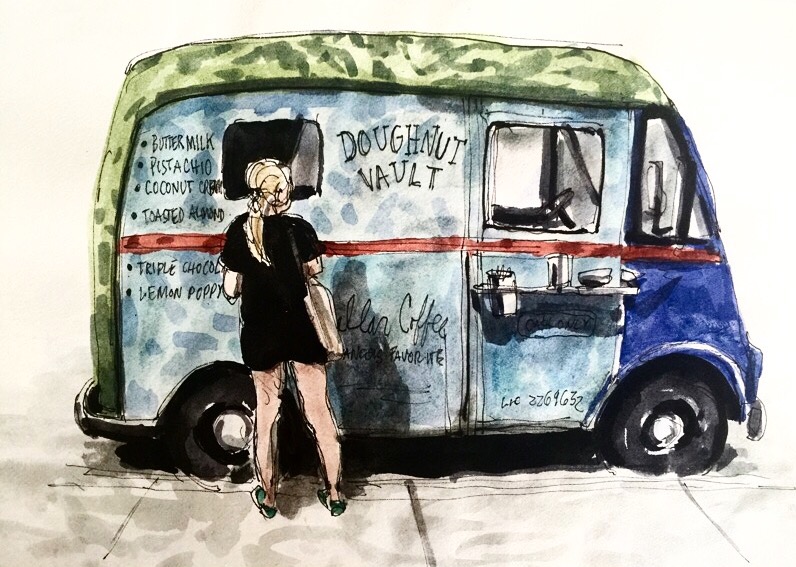The Giving Pig
“We’re getting killed by onions,” warns Chef Laurence Jossel, as he welcomes me into the basement kitchen at Nopalito on 9th Avenue. Sure enough the vapors overwhelm my eyes and the waterworks begin, while the cooks busy themselves with their daily preparations. But a different ritual brings me to Nopalito today: Every Friday, Jossel butchers a Stone Valley Farm hog, providing Nopa with a variety of pork products. He used to butcher the animal on the pastry table upstairs at Nopa after Saturday brunch, but that proved to be inefficient, among other things. “It freaked the pastry chef out,” he remembers. “‘No blood in the sugar, please.’” The Nopalito kitchen offers him more room to work. The former vegetarian describes the butchering rite as “an intimate act, a deep experience. I don’t take it lightly. The one thing about the pig is that it’s so giving. You can use every single part—and we do.”
The open-air raised Stone Valley Farm Berkshire pig had been slaughtered on Monday and delivered on Wednesday. It awaits in the “protein freezer” for a Friday butchering.
Jossel will cook these for five hours, and serve them on the “piggy platter” as the crispy trotters. He’ll use the same stock again for the pig’s head.
After brining for two hours, the tenderloin will join the crispy trotters on the piggy platter.
Jossel begins to cut out the spine and ribs. He separates the ham from the body by disengaging the ball and socket from the pelvis/femur area, using a technique called “blind butchering.” Knowledge of the anatomy eases the process. “If you can butcher a pig, you can butcher a rabbit,” he explains. “Butcher a rabbit, you can butcher a lamb.” The spine and ribs now freed from the body, they will be used as stock later. “Nothing goes to waste.”
With the spine removed, Jossel then separates the ham and shoulder from the loin and belly. He points to the shoulder, “I’ll take this over to Nopa this afternoon, brine and braise it bone in, then you’ll see it on the brunch menu this weekend. It’s my favorite cut, personally. The most fat, the best texture.”
He then divides the ham into muscle groups, while delicately extracting a prize—the pork shank. “This can fetch twenty, maybe twenty-five dollars. When the animal costs six hundred to seven hundred dollars, every bit counts.” On Monday, he’ll brine the muscles for a week, then smoke them.
“So we have the loin of pork and the belly here. If I had left the spine and ribs in, we’d have pork chops.” Jossel then points to the belly, “We’d get pancetta or bacon here.” But this cut is destined for "Porchetta Night" on Tuesday at Nopa. He rolls the belly and loin together, observing how the ends align. He then scores the skin, which increases surface area, renders more fat, and sets the tone for the chiccarones. It will sit in brine until Tuesday morning, then Jossel will take the porchetta out and bring it to Nopa, where it will be stuffed with sage, rosemary and garlic and finally roasted for four and a half hours.
Jossel cuts open the bag of organs and takes hold of the liver and is immediately impressed with it. “Massive lobes, great color,” he looks closer, “and no flukes.” Worms pose a potential threat as the animals eat outside. He’ll cook the liver, deglaze it with cognac and red wine, and puree it into a liver mousse for the “piggy platter.”
Last but not least…the Italians call it coppa di testa, the French refer to it as fromage de tête, but here in America it’s simply known as Head Cheese. The lactose intolerant needn’t worry—it’s pure pig. Jossel will smoke the head and put it in that same collagen/gelatin stock used for the trotters, and then cook it for three hours.
Portlander
Oneonta Gorge
Thunder Island Brewing Co. – Columbia River





































































































